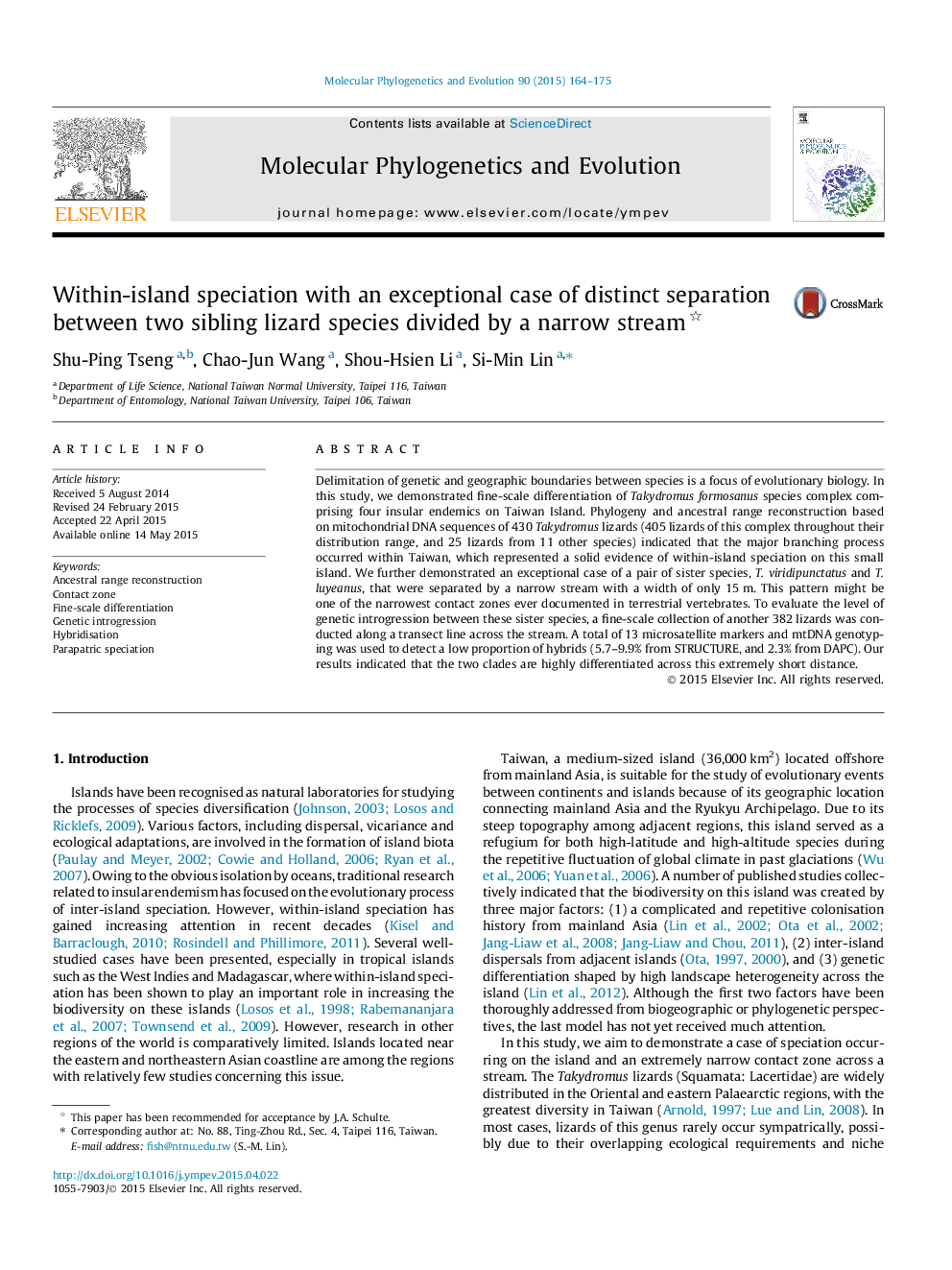| کد مقاله | کد نشریه | سال انتشار | مقاله انگلیسی | نسخه تمام متن |
|---|---|---|---|---|
| 2833771 | 1570806 | 2015 | 12 صفحه PDF | دانلود رایگان |
• Phylogeny of Takydromus formosanus species complex represented solid evidence of within-island speciation in Taiwan.
• Takydromus viridipunctatus and T. luyeanus are now separated by a narrow stream with a width of only 15 m.
• These sister species formed one of the narrowest contact zones ever documented in terrestrial vertebrates.
• Microsatellite and mitochondrial DNA genotyping indicated a low proportion of hybrids across this contact zone.
Delimitation of genetic and geographic boundaries between species is a focus of evolutionary biology. In this study, we demonstrated fine-scale differentiation of Takydromus formosanus species complex comprising four insular endemics on Taiwan Island. Phylogeny and ancestral range reconstruction based on mitochondrial DNA sequences of 430 Takydromus lizards (405 lizards of this complex throughout their distribution range, and 25 lizards from 11 other species) indicated that the major branching process occurred within Taiwan, which represented a solid evidence of within-island speciation on this small island. We further demonstrated an exceptional case of a pair of sister species, T. viridipunctatus and T. luyeanus, that were separated by a narrow stream with a width of only 15 m. This pattern might be one of the narrowest contact zones ever documented in terrestrial vertebrates. To evaluate the level of genetic introgression between these sister species, a fine-scale collection of another 382 lizards was conducted along a transect line across the stream. A total of 13 microsatellite markers and mtDNA genotyping was used to detect a low proportion of hybrids (5.7–9.9% from STRUCTURE, and 2.3% from DAPC). Our results indicated that the two clades are highly differentiated across this extremely short distance.
Figure optionsDownload as PowerPoint slide
Journal: Molecular Phylogenetics and Evolution - Volume 90, September 2015, Pages 164–175
